On this website I make a proposal for a trip to London. The proposal is made for family of four persons (2 adults, 2 children). They stay for four nights. The total budget is 4000 euro, that is approximately 2916 pounds.
Global overview of the trip:
Day 1:
- Fly to London City
- Transfer to the apartment by underground
- Checking in the apartment
- With Hop on Hop off bus tour to
- London Eye, Big Ben, Houses of Parliament, Westminster Abbey, Trafalgar Square, National Gallery, Piccardilly Circus, Hamleys Toy Store, Hyde Park and Speakers’Corner
Day 2:
- Tower of London
- Tower Bridge lifting
- Tower Bridge Exhibition
- Exhibition: Art at the Bridge in the Tower Bridge
- HMS Belfast
- Dinner: The Medieval Banquet
Day 3:
- Thames River Roamer Cruise London to Greenwich and back
- Cutty Sark
- Picknich in the park
- The Greenwich Meridian
- Greenwich Observatory
- National Maritime Museum, Greenwich
- Covent Garden
- The Ghost Bus Tours – London
Day 4
- Soho London’s Chinatown
- Buckingham Palace The Queen’s Picture Gallery
- Buckingham Palace Changing of the Guards
- Royal Mews
- the Guards’ Museum
- Changing of the Horse Guards
- store luggage for departure
Day 5
- Check out of the apartment
- Warner Bros Harry Potter Studio Tour
- Pick up luggage
- Transfer to the airport
- Fly back to Amsterdam Schiphol
General costs:
4 KLM tickets (returnflights) € 258 the ticket, is € 1032,00 altogether
4 nights at the Home Away apartment (€ 222,00 per night) are € 888,00
We buy the Oyster Card for unlimited traveling possibilities in London. Travelling through London with a family with two children (one younger than 11 years and one 11-15 years old) costs € 95,32.
Costs of transport
- Take the Oyster card for transport for the tube, bus, or DLR (Docklands Light Rail). ‘A single journey on the London Underground in central London (between zones 1 – 2) costs just £2.90 credit. The maximum credit spend limit is just £6.40 which means if you’re sightseeing across the city and making a lot of journeys that day, any travel after your third journey won’t cost you any credit!’
- Traveling is for free for children under 11 years.
- For children older than eleven years is the Oyster photocard or the Children Travelcard. Applying for an 11-15 Oyster photocard takes a minimum of 4 weeks! If you do not have enough time to order, buy a Child Travelcard instead.
- A £30 Oyster Card is for an adult who stays 3-4 days. It costs € 35,16. Put € 25,00 on an Oyster photocard.
THE GENERAL COSTS FOR 5 DAYS are € 2015,32 altogether. For sight-seeing and food / eating & drinking € 1984,68 are left for 5 days. That means € 396,93 that can be spent every day.
DAY 1:
- Flight, London City Airport, transport to the apartment near London Bridge
In order to have a lot of time in London it is good to take an early flight. KLM offers a flight to London City Airport at 7:05 am on Monday morning. We arrive at London City Airport at 7:20 London time. As we travel by underground we will check planned works before. It can save you a lot of time. The check out off the airport will not take longer than an half hour (7:50 am).
It is much cheaper to book a flat with Home Away than spending a lot of money for family rooms in a hotel. The apartment that is chosen is close to the London Bridge: “London Bridge 2 bed appartment“, Morocco Street. The walking distance to London Bridge underground station is 10 minutes.
From London City Airport it takes 39 minutes with the Jubilee Line, stop London Bridge. The underground goes every 12 minutes. You will arrive at the apartment about 8:45 am to check in. Checking in will not take longer than 30 minutes (9:15 am).
- Supermarket
Nearby ( a 7 min walk) at 125 Southwalk Tooley Street there is a supermaket. It is a Tesco open from 6am to 23:00 pm. Before starting with sight-seeing, fill your refrigerator. Buy things for breakfast on tuesday morning and some crackers, cookies, water, vegetable and fruits that you can take with you to the sight-seeing. It saves you a lot of money. Spend about € 30 (22 Pounds). After 35 minutes you should be back with the groceries at the apartment (10:20 am).
- English Breakfast at My Tea Shop
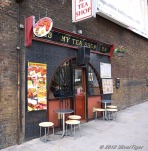 My Tea shop is in an railway arch in the station ramp. It has a small dining room with four tables. Take ‘My breakfast’: 2 Cumberland susages, 2 bacon rashers, egg, chips, beans, tea or coffee. ‘My Tea Shop’ is located on 23 Duke St Hill, Southwark and open from 6:30 am to 15:30 pm.
My Tea shop is in an railway arch in the station ramp. It has a small dining room with four tables. Take ‘My breakfast’: 2 Cumberland susages, 2 bacon rashers, egg, chips, beans, tea or coffee. ‘My Tea Shop’ is located on 23 Duke St Hill, Southwark and open from 6:30 am to 15:30 pm.- Sight-seeing with the Hop on Hop off bus
 Begin the sight-seeing at 11 o’clock with the Hop on Hop off bus. You will get a great overview of London City. There are audio guides in different languages included. The bus has over 60 stops on 4 different routes. Buses run every 5 to 10 minutes. Departure point: You can join the tour from any of the 60 stops. Each of the stops has a clearly signpost Golden Tours Hop on Hop Off/London Tour Bus. Hop on the bus around the corner. The bus stop S (orange line) ‘London Bridge Experience’ (nr. 39 on the card).
Begin the sight-seeing at 11 o’clock with the Hop on Hop off bus. You will get a great overview of London City. There are audio guides in different languages included. The bus has over 60 stops on 4 different routes. Buses run every 5 to 10 minutes. Departure point: You can join the tour from any of the 60 stops. Each of the stops has a clearly signpost Golden Tours Hop on Hop Off/London Tour Bus. Hop on the bus around the corner. The bus stop S (orange line) ‘London Bridge Experience’ (nr. 39 on the card).
- London Eye, Westminster Abbey, Big Ben and the Houses of Parliament
Hop off at the London Eye. Within 20 minutes we should be there. By purchasing your ticket in advance, you can safe a lot of time (in the season, the wait can be an hour!) Use the reserved entrance. That is quick and easy! To go one time around it takes 30 minutes. Westminster Abbey, Big Ben and the Houses of Parliament are on the opposite site of the Thames to visit. From the London Eye we walk the Queen’s Walk along the County Hall and the shore of the Thames and cross the Westminster Bridge. That takes about 10 minutes. We can’t visit Big Ben and the Houses of Parliament only with a tour on a 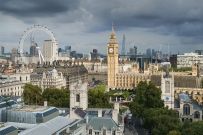 Saturday because we aren’t British citizens. We can book a guided tour in advance if we visit London on other days than we planned here. The Houses of Parliament have made an audio tour especially for families. It is like a ‘live’ news broadcast and there are time travelling reporters telling stories about the history of the building. We can also watch it with a virtual tour and see it all.
Saturday because we aren’t British citizens. We can book a guided tour in advance if we visit London on other days than we planned here. The Houses of Parliament have made an audio tour especially for families. It is like a ‘live’ news broadcast and there are time travelling reporters telling stories about the history of the building. We can also watch it with a virtual tour and see it all.
Visit Westminster Abbey instead (12:00 – 13:00). Westminster Abbey has a more than a thousand years of history. Benedictine monks first came to this place in the middle of the tenth century and started a tradition of daily worship which continues to this day. The Abbey has been the coronation church since 1066 and is the final resting place of seventeen monarchs. The present church, begun by Henry III in 1245, is one of the most important Gothic buildings in the country. Over 3000 people have been buried here in the 1000 years since the Abbey was founded. Many of them were scientists (e.g.Isaac Newton). This trail will help you learn a bit about them and their work.
- Lunch at Pickles
- Trafalgar Square and National Gallery
Don’t forget to hop off at Trafalgar Square (about 14:05) and throw a coin into one of the fountains. Then it is for sure that you will come back to London! The National Gallery (address: Trafalgar Square) is too big to visit in an hour but take the tour for children. Searching through the National Gallery as a senior detective. Print it out and bring it with you when you visit the Gallery You will see a lot. It takes 1 hour.
will come back to London! The National Gallery (address: Trafalgar Square) is too big to visit in an hour but take the tour for children. Searching through the National Gallery as a senior detective. Print it out and bring it with you when you visit the Gallery You will see a lot. It takes 1 hour.
- Picadilly Circus and Hamleys Toy Store
 Hop on the Blue Line again and hop off at Picadilly Circus (takes about 15 mins). Walk 5 minutes to the north on Regent
Hop on the Blue Line again and hop off at Picadilly Circus (takes about 15 mins). Walk 5 minutes to the north on Regent  Street. There is Hamleys Toy Store. It is a paradise for everyone to see and it has a long history already. Hamleys is the oldest toy shop in the world and one of the world’s best-known retailers of toys.The store in London is across 7 floors with more than 50,000 toys.
Street. There is Hamleys Toy Store. It is a paradise for everyone to see and it has a long history already. Hamleys is the oldest toy shop in the world and one of the world’s best-known retailers of toys.The store in London is across 7 floors with more than 50,000 toys.
- Finish the Hop on Hop off bus tour
Hop on the Blue Line to Marble Arch. Hop off and enter the Hyde Park to visit the Speakers’Corner. Listen to the speakers. Hop on the bus again and go with the BlueLine back to the Tower Bridge, cross the Bridge and back again to Big Ben. The last complete tours will be at 17:00.
- dinner: typical Indian Food at Masala Zone Earls Court
“Welcome to London’s best Indian brasserie restaurants – the pioneers of Indian Street Food in London restaurants.” Address: 147 Earls Court Road London. To get there look it up with google maps. For the menu click here. After dinner walk 3 mins to Earls Court underground station and take the Picadilly Line (towars Cockfosters). At Green Park get off (9 mins, 5 stops) and take the Jubilee Line (towards Stratford). Get off after 6 mins (4 stops) at London Bridge and walk 10 mins to the apartment.
Costs day 1:
Groceries € 30,00
Breakfast: My breakfast’ for £ 7,95 (€ 9,32): 2 Cumberland susages, 2 bacon rashers, egg, chips, beans, tea or coffee. For the family the breakfast costs € 37,28.
Hop on Hop off bus Golden Tours: Buy your ticket for the Hop on Hop off bus in advance. Prices change every day a bit. Take a special offer. A family ticket is € 80,62.
London Eye tickets: Londen Eye tickets costs for an adult € 29,50 and a child € 19,50, so in total €98,00(Tickets online for the Houses of Parliament: Audio family tour English, adult £18 (€ 24,75), one child free with each paying adult, but will require a ticket for admission, £7,20 (€ 9,90). Altogether it costs € 69,30.)Westminster Abbey: Family ticket (2 adults and 2 children) £ 45,00 (€ 52,75).Lunch at ‘Pickles’ 6 Old Queen Street | Westminster, London: Price range under £10 (€ 11,72), which is about € 46,88 for a lunch for 4 persons.National Gallery: Free entry 361 days a year.Dinner Masala Zone Earls Court: about £ 12,00 per person, € 56,25 altogether.Total costs of the day: € 401,78.
DAY 2:
- Tower of London
You kan sleep a little bit longer this morning because the attractions are all close to the apartment. Make your own breakfast. Jou have to leave the apartment at 8:30am. First you will walk to the Tower of London. That takes 20 minutes.
There is a lot to see at the Tower of London. We could spend a whole day, no problem. On their site is a very good planning. We will spend 3 hours at the Tower and do 10 things:
- join one of the famous Yeoman Warder tours (exciting tales from the Tower’s past (60 mins.)
- visit the Crown Jewels (20 mins.)
- visit the White Tower built by William the Conqueror and the collection of the Royal Armouries (20 mins.)
- experience the history of the Tower through live costumed re-enactments (ca. 15 mins.)
- see the famous ravens next toe the White Tower (10 mins.)
- explore the story of how the Tower was attacked and defended in the interactive Fortress displays (10 mins.)
- walk through the rich colours and comfortable furnishings of the Medieval Palace (20 mins.)
- decide who murdered the Little Princes in the Bloody Tower (15 mins)
- see instruments of torture in the Lower Wakefield Tower (10 mins.)
- discover the prisoner graffiti in the Beauchamp Tower (10 mins)
At 12:30 we have lunch at Ping Pong St Katharine Docks. Book a table in advance. We leave there around 13:30 and walk to the Tower Bridge.
- Tower Bridge lifting
A Tower Bridge lifting must be booked by a boat that is to high to pass the brigde. Any ship with a mast or superstructure of 30ft (9m) or more wishing to enter or leave the Upper Pool of London can ask for a Bridge Lift. When a booking is made, Tower Bridge will add the lift to the Bridge Lift schedule. In order to be at the bridge to see a lifting you have to check te Lift schedule in advance. A lifting takes perhaps 20 minutes.
- Tower Bridge exhibition
The Tower Bridge Exhibition lets you discover the history of the Bridge (built in 1894), how it was built and further developed. You learn about its place in the history of the River Thames. There are interactive displays and videos. The new Glass Floor walkway across the two towers 45 m above the Thames allows you to see passing boats from above. You will have breath-taking views from the high-level walkway and the East Walkway. In the East Walkway we visit the exhibition ‘Great Bridges of the World’. It shows more than 40 bridges of inspiring engineering. Download the fun and educational Tower Bridge App on the website.

- exhibition: Art at the Bridge in the Bridge #6
The latest exhibition we can see in the Victorian Engine Rooms. Admire the eight works of art with the theme ‘Tides of Change: charting life’s ebbs and flows’ across a range of media’. Leave the Tower Bridge around 15:15 and walk to the HMS Belfast. It takes 6 minutes.
- HMS Belfast
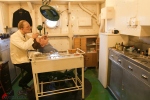 Explore HMS Belfast to find out what life was like at war and at sea on board this historic warship. Address: The Queen’s
Explore HMS Belfast to find out what life was like at war and at sea on board this historic warship. Address: The Queen’s 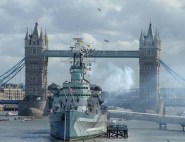 Walk. HMS Belfast was launched in 1938 and served with distinction in both the Second World War and the Korean War. She is now the only surviving example of the great fleets of big gun armoured warships built for the Royal Navy in the first half of the twentieth century.
Walk. HMS Belfast was launched in 1938 and served with distinction in both the Second World War and the Korean War. She is now the only surviving example of the great fleets of big gun armoured warships built for the Royal Navy in the first half of the twentieth century.
- Dinner: The Medieval Banquet
The Medieval Banquet is located just to the east of the City of London and Tower Bridge, in St. Katharine’s Dock.
Costs day 2:
Tower of London: A family ticket is £ 52,10 (€ 71,80).
Lunch at Ping Pong St. Katharine Docks is about £18,00 (€ 24,80) per person, altogethet about € 100,00.
Tower bridge exhibition: 2 adults & 2 children costs £ 20,30 (€ 28,00).
HSM Belfast: Family ticket 2 adults / 2 children costs £ 38,15 (€ 44,75)
Dinner at the Medieval Banquet: family ticket £ 110,00 (€ 129,00)
Total costs of the day: € 373,55.
DAY 3:
- The Breakfast Club
Have breakfast at around 8:15am at The Breakfast Club. The address is 11 Southwark Street. It is 14 minutes walking from the apartment (look it up with google maps). Leave there at 9:25am and walk to the London Bridge City Pier. There the River Roamer will leave at 9:44am and bring you to Greenwich (arrival at Greenwich Pier 10:04am ).
- Thames River Roamer Cruise London to Greenwich
Going with the River Roamer Hop on and off boat is possible with the Daily River Roamer ticket. We can use it every day from 9am on. Online tickets must be purchased in advance (prior to the day of travel). All tickets booked online are sent out via email to be printed off at home. Just show them at the pier.
9am on. Online tickets must be purchased in advance (prior to the day of travel). All tickets booked online are sent out via email to be printed off at home. Just show them at the pier.
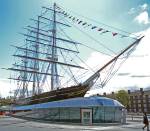 At the Greenwich Pier is the Cutty Sark Clipper Ship (address: King William Walk). We use a combo ticket to see the Cutty Sark and the Royal Observatory. Cutty Sark is the world’s sole surviving tea clipper, built in 1869 to carry tea back from China, she visited nearly every major port in the world during the course of her career and gained fame for her record-breaking passages through the wildest oceans around the globe. Have a look what you must see. Join Cutty Sark’s crew as the Captain”s apprentice. Play the game! Finish visiting the Cutty Sark at 11:40am and walk through the Greenwich Park to the Royal Observatory up the hill.
At the Greenwich Pier is the Cutty Sark Clipper Ship (address: King William Walk). We use a combo ticket to see the Cutty Sark and the Royal Observatory. Cutty Sark is the world’s sole surviving tea clipper, built in 1869 to carry tea back from China, she visited nearly every major port in the world during the course of her career and gained fame for her record-breaking passages through the wildest oceans around the globe. Have a look what you must see. Join Cutty Sark’s crew as the Captain”s apprentice. Play the game! Finish visiting the Cutty Sark at 11:40am and walk through the Greenwich Park to the Royal Observatory up the hill.
- Greenwich Park
 Is one of London’s eight Royal Parks. Greenwich Park is a former hunting park and one of the largest single green spaces in south-east of London. It was the first park to be enclosed in 1433. The Royal Observatory is about 15 mins walk from the Cutty Sark through the beautiful Greenwich Park (see google maps).
Is one of London’s eight Royal Parks. Greenwich Park is a former hunting park and one of the largest single green spaces in south-east of London. It was the first park to be enclosed in 1433. The Royal Observatory is about 15 mins walk from the Cutty Sark through the beautiful Greenwich Park (see google maps).
- The Royal Observatory, Greenwich
Visit the Royal Observatory from 12:00 – 13:00. The Royal Observatory is the historic home of British astronomy, GMT  (Greenwich Meridian Time) and the Prime Meridian. It was established in the 17th century as the first state-funded scientific centre in Britain. It was from here that the great scientists of the time precisely mapped the stars to help navigate at sea. Centuries later, the legacy of the Royal Observatory continues to define global time zones. Here is the Prime Meridian of the World.
(Greenwich Meridian Time) and the Prime Meridian. It was established in the 17th century as the first state-funded scientific centre in Britain. It was from here that the great scientists of the time precisely mapped the stars to help navigate at sea. Centuries later, the legacy of the Royal Observatory continues to define global time zones. Here is the Prime Meridian of the World.
- The Prime Meridian of the World
13:00-13:15 You can stand on the world-famous Greenwich Meridian Line. It is the Prime Meridian to the World – Longitude 0 º. Every place on earth is measured in its distance east or west from the Greenwich Meridian.
- picknich in the park or lunch at the Pavilion Café
lunch: have a picknick in Greenwich Park or if the weather is bad have lunch at the Pavilion Café. There you can buy your  sandwiches. It was built in 1906. Leave at 14:00 to visit the National Maritime Museum down the hill.
sandwiches. It was built in 1906. Leave at 14:00 to visit the National Maritime Museum down the hill.
- The National Maritime Museum, Greenwich
Address: Park Row, Greenwich, visit from 14:15 – 15:30
Experience the world’s largest maritime museum, filled with inspirational stories of exploration and endeavour at sea and packed with challenging objects and fascinating galleries. To discover: 500 years of British history and struggle with the sea and lots of interesting objects and stories. The entrance is free. Visit:
Traders: The East India Company and Asia is about Britain’s maritime trade with Asia and the role the East India Company had.
The Atlantic: Slavery, Trade, Empire, is about the movement of people, goods (e.g. sugar) and ideas across and around the Atlantic Ocean from the 17th century to the 19th century.
The Great map: Complete the visit to the National Maritime Museum with a round-the-world trip on the Great Map. A variety of activities and digital learning games for different ages.
Be in time for the River Roamer boot. It leaves the Greenwich Pier at 15:43. It takes 10 mins to walk.
- Thames River Roamer Cruise from Greenwich Pier to London Eye
 See London from a different perspective. The boat goes along the skyline of Canary Wharf. It is a major business district and it is one of the UK’s two main financial centres. The boat passes the Tower Bridge, the Tower, the museum boat HSM Belfast, Old Billingsgate Market (used to be the world’s largest fish market), the London Bridge and the skyscraper Shard,
See London from a different perspective. The boat goes along the skyline of Canary Wharf. It is a major business district and it is one of the UK’s two main financial centres. The boat passes the Tower Bridge, the Tower, the museum boat HSM Belfast, Old Billingsgate Market (used to be the world’s largest fish market), the London Bridge and the skyscraper Shard, 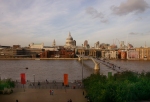 later on the Millennium Bridge that is between the museum Tate Modern and St. Paul’s Cathedral. In Harry Potter and the Half-Blood Prince you can see it, too. Somerset House, the Queen Elisabeth Hall and the Hungerford Bridge and after that the London Eye, Big Ben and the Houses of Parliament.
later on the Millennium Bridge that is between the museum Tate Modern and St. Paul’s Cathedral. In Harry Potter and the Half-Blood Prince you can see it, too. Somerset House, the Queen Elisabeth Hall and the Hungerford Bridge and after that the London Eye, Big Ben and the Houses of Parliament.
Hop off the River Roamer boat at the London Eye. You are there at 16:28pm. You are on your way to Covent Garden. Walk 8 mins to Waterloo Station and take the Northern Line (to High Barnet) at 16:41pm. It takes 3 mins (3 stops) to get to Leicester Square where you get off (16:44pm).
- Covent Garden
The Apple Market is found in the North Hall of the Marketing Building and sells British made crafts, jewellery, leather goods and more. You will always find a range of curios every day of the week. Also open every day of the week, the East Colonnade Market has a variety of stalls selling products such as handmade soap, jewellery, handbags, hand-knitted children’s clothing, a magician’s stall, sweets, artwork and homeware. In the South Piazza, the Jubilee Market changes its wares daily. From Tuesday to Friday there is a general market with traders selling clothes and household goods. Look up information about street performers!
and more. You will always find a range of curios every day of the week. Also open every day of the week, the East Colonnade Market has a variety of stalls selling products such as handmade soap, jewellery, handbags, hand-knitted children’s clothing, a magician’s stall, sweets, artwork and homeware. In the South Piazza, the Jubilee Market changes its wares daily. From Tuesday to Friday there is a general market with traders selling clothes and household goods. Look up information about street performers!
- Fish and Chips at The Rock & Sole Plaice
London’s oldest Fish and Chips restaurant, established in 1871. Address: The Rock & Sole Plaice, 47 Endell Street, London. “Our locally sourced, sustainable, British fish has been described as the best in London and is still prepared using our 140 year old traditional recipe. We have 2 floors of cosy seating inside plus an Al Fresco dining area perfect for those warm summer nights in the heart of Covent Garden.”
- The Ghost Bus Tours – London
“Ghost Bus Tours is a theatrical sightseeing tour on a classic 1960s Routemaster bus. On-board actors and technical trickery combine to create a Frightseeing tour like no other – a hilarious horror show while you see the sights. From the Houses of Parliament and Westminster Abbey over to St. Paul’s Cathedral and the Tower of London, see the city’s sites of murder, torture and execution, and learn about the ghosts of London.”
Departure point: Northumberland Avenue, just off of Trafalgar Square. The Bus stop is outside the Grand Hotel. Passengers should be there 15 minutes prior to their tour time to make sure that the bus can leave in time. Departure: 19:30. The tour takes 1 hour and 15 mins.
- Back to the apartment
Walk from Trafalgar Square to underground station Charing Cross (it takes 4 mins) and take the Bakerloo Line (towards Elephant&Castle). It leaves at 20:58, arrives at Embankment at 20:59. Walk to the Embankment Pier and go with the River Roamer Boat at 21:08 back to London Bridge (arrival 21:26). Walk home.
Costs day 3:
Breakfast at The Breakfast Club: you can have a good breakfast for £ 10,00. That makes £ 40,00 (€ 54,42) for four persons.
A Daily River Roamer family ticket is valid for 2 adults and up to 3 children (the age of 5 – 15). The discounted family rate is £ 32,50 (€ 38,10).
The Cutty Sark and the Royal Observatory combo ticket is £ 43,00 (€ 50,40)
Buying lunch for picknick or having lunch at the Pavilion Café costs about £ 10,00 each person, £ 40,00 (€ 54,42) altogether.
Fish and Chips at The Rock & Sole Plaice: Regular Cod & Chips £ 15,00 and something to drink £ 2,00, (£17,00 x 4 is £68,00 (€ 79,70) altogether).
The Ghost Bus Tours – London with Free Guide Book: Family ticket book in advance € 79,23.
Total costs of the day: € 356,27.
DAY 4
- Breakfast in SOHO at Bill’s
Get up early and leave the apartment at 7:40am. Walk 12 mins to London Bridge and take the underground Jubilee Line (towards Stanmore) at 7:54pm. It takes 6 mins (4 stops) to Green Park. Get off and walk 2 mins to change lines. Get on the Piccadilly Line (towards Cockfosters) at 8:06am. It takes 1 minute to get to Picadilly. There you get off and walk 4 mins to 36-44 Brewer Street. The whole journey takes 29 mins. You will be there at 8:11 pm. Bill’s opens at 8 o’clock. Have breakfast.
- London’s Chinatown
Soho is London’s Chinatown. Chinatown is situated between Wardour Street and Lisle Street, mostly along Gerrard Street, not far from Piccadilly Circus. After breakfast there is time to look around. At 9:40am we have to be at Leicester underground station and take the Piccadilly Line (towards Northfields). It takes 2 mins (2 stops) to Green Park (arrival: 9:50am). Walk through the Green Park to Buckingham Palace (it takes 8 mins). Green Park is also as Greenwich Park one of the Royal Parks of London.
- Buckingham Palace
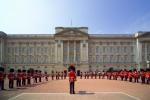 Buckingham Palace serves as both the office and London residence of Her Majesty The Queen. It is one of the few working royal palaces remaining in the world today. It is not possible to visit Buckingham Palace in October. The end of the Summer Opening of Buckingham Palace is on 27 September 2015. Otherwise it would have been nice to visit and have an afternoon tea there.
Buckingham Palace serves as both the office and London residence of Her Majesty The Queen. It is one of the few working royal palaces remaining in the world today. It is not possible to visit Buckingham Palace in October. The end of the Summer Opening of Buckingham Palace is on 27 September 2015. Otherwise it would have been nice to visit and have an afternoon tea there.
It is possible to visit the Royal Collection in the Queen’s Gallery. A typical visit lasts between 1 and 1 hour 30 minutes. Open daily at 10:00am. Painting Paradise: The Art of the Garden shows the way in which gardens have been celebrated in art across four centuries. Bringing together paintings, botanical studies, drawings, books, manuscripts and decorative arts, the exhibition explores the changing character of the garden from the 16th to the early 20th century. Visit 10.00am – 11:00am. Leave for seeing the Change of the Guards.
- Buckingham Palace Changing of the Guards
Be at Buckingham Palace at 11 o’clock to get a get a good place where you can see it all. Changing the Guard at Buckingham ![]() Palace is scheduled to take place on EVEN DATES in October unless stated otherwise. On the 8th of October we can see the Queen’s Colour Squadron RAF, the Band of the RAF Regiment (Full Mount) and the Band of the Welsh Guards (Full Dismount). It starts at 11:30am. We will stay 45 mins.
Palace is scheduled to take place on EVEN DATES in October unless stated otherwise. On the 8th of October we can see the Queen’s Colour Squadron RAF, the Band of the RAF Regiment (Full Mount) and the Band of the Welsh Guards (Full Dismount). It starts at 11:30am. We will stay 45 mins.
- Royal Mews at Buckingham Palace
 Address: The Royal Mews, Buckingham Palace, London. Visit: 12:15 – 13:00pm. One of the finest working stables that still exists, is the Royal Mews at Buckingham Palace. It is home to the royal collection of historic coaches and carriages. The Royal Mews houses the State vehicles, both horse-drawn carriages and motor cars, used for coronations, State Visits, royal weddings, the State Opening of Parliament and official engagements. The most dazzling of all the coaches on display is the Gold State Coach. As the horses may be on duty, undergoing training or away from London, they are not always on view.
Address: The Royal Mews, Buckingham Palace, London. Visit: 12:15 – 13:00pm. One of the finest working stables that still exists, is the Royal Mews at Buckingham Palace. It is home to the royal collection of historic coaches and carriages. The Royal Mews houses the State vehicles, both horse-drawn carriages and motor cars, used for coronations, State Visits, royal weddings, the State Opening of Parliament and official engagements. The most dazzling of all the coaches on display is the Gold State Coach. As the horses may be on duty, undergoing training or away from London, they are not always on view.
You can visit the Royal Mews using the complimentary audio tour, which lasts ca. 45 minutes. For safety and security reasons, a one-way system operates along the visitor route. On arrival, you and your belongings will be subject to airport-style security checks.
- Lunch in an hour at Tiles Wine Bar
Walk 3 mins from the Royal Mews to “Tiles Wine Bar”, 36 Buckingham Palace Road and have “Lunch in an hour: call ahead and place your order and let us know your time of arrival and we will ensure you have a nicely paced lunch that fits your schedule. See our [menus] then call Tiles with your lunch choices.” Leave at 14:00pm to walk to the The Guards Museum. It is in north-east direction of the restaurant (see google maps). The walk takes 10 mins.
- The Guards Museum
Address: The Guards Museum, Wellington Barracks, Birdcage Walk, London. “The Guards Museum has a wealth of information and artefacts relating to the five regiments of Foot Guards namely Grenadier, Coldstream, Scots, Irish and Welsh  Guards. Along with the two regiments of Household Cavalry they make up Her Majesty’s Household Division and enjoy the treasured privilege of guarding The Sovereign and the Royal Palaces.”
Guards. Along with the two regiments of Household Cavalry they make up Her Majesty’s Household Division and enjoy the treasured privilege of guarding The Sovereign and the Royal Palaces.”
- Changing of the Horse Guards
In front of the Guards Museum at 16:00pm. Life Guards have stood guard at Horse Guards, the official entrance to St James and Buckingham Palace, since the Restoration of King Charles II in 1660. The ceremony lasts about half an hour, and the mounted sentries change every hour, or half hour in very cold weather during the day until 16:00 when a dismounting ceremony takes place. The 4 ‘o’ Clock Parade started in 1894 when Queen Victoria found the entire guard drinking and gambling while on duty. As a punishment, she said they had to be inspected every day at 4pm by an officer for the next 100 years! The 100 years finished in 1994. However, the reigning Queen wanted the parade to continue as a tradition.
- Prepare for day 5 and the journey back home
Buy things for breakfast and for the journey to Warner Bros Harry Potter tour for the next morning at the Tesco supermarket.
Pack the suitcases and bring them in the evening to the luggage storrage at Waterloo Station. Walk to London Bridge underground station, take the Jubilee Line (towards Wembley Park) and get off at Waterloo Station after 3 mins (2 stops). It takes 16 mins to get there.
- Dinner at The Assado
The Assado serves a mixture of Goan, Portuguese and Brazilian cuisine (dinner menu). Address: 157 Waterloo Road. It is 4 mins walk from Waterloo Station (check google maps).
Costs day 4:
Breakfast in SOHO at Bill’s: costs about £ 10,00 each person, £ 40,00 (€ 54,42) altogether.
The Royal Mews and The Queen’s Gallery: family combination ticket is £43.80 (€ 59,70).
Lunch in an hour at Tiles Wine Bar: £ 60,00 (€ 81,80).
The Guards Museum: adults £ 6,00, children 16 years of age and under free. Costs £ 12,00 (€ 16,35).
Groceries € 30,00.
Luggage storrage Waterloo Station: £ 44,00 (€ 51,60).
Dinner at The Assado: £ 21,50 (€ 100,00) should be enough to have dinner.
Total costs of the day: € 393,87.
DAY 5
- Warner Bros. Studio Tour London – The Making of Harry Potter
The Warner Bros Studio Tour London is located 20 miles north-west of London (address: Studio Tour Drive, Leavesden, 
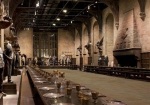 WD25 7LR). Regular public transport links serve the attraction. You order your tickets online. They will be posted in a ticket wallet. Please ensure there are 28 days between the day you book and the date of your visit. They cannot guarantee the tickets or gift voucher will arrive in time if the chosen visit date is less than this.
WD25 7LR). Regular public transport links serve the attraction. You order your tickets online. They will be posted in a ticket wallet. Please ensure there are 28 days between the day you book and the date of your visit. They cannot guarantee the tickets or gift voucher will arrive in time if the chosen visit date is less than this.
Have breakfast at the apartment. Leave the apartment at 8:15am and walk to the London Bridge underground station (15 mins). Take the Northern Line (towards Edgware) and get off at Euston (12 mins, 6 stops). Walk to the departure of the ‘London Midland’ train (towards Northampton) platform 8. It takes 1 minute to get there. Get off at Watford Junction at 9:11am (17 mins non-stop). Check with the google map option on the Studio site ‘Journey Tool’. There you take the shuttle bus from Watford Junction train station to the studio. Please plan to arrive at Watford Junction 45 minutes before the time stated on your ticket and have your ticket or booking confirmation ready when boarding the shuttle bus.
 Take the handheld audio-visual guide. It brings the Studio Tour to life with fascinating filmmaking facts, exclusive behind-the-scenes footage and cast and crew interviews. Narrated in English by Tom Felton (Draco Malfoy). Behind-the-scenes Walking Tour, step inside and discover the actual Great Hall and Diagon Alley, see the actual props, costumes and effects from the Harry Potter film series. Get something to eat at the Studio Café or The Backlot.
Take the handheld audio-visual guide. It brings the Studio Tour to life with fascinating filmmaking facts, exclusive behind-the-scenes footage and cast and crew interviews. Narrated in English by Tom Felton (Draco Malfoy). Behind-the-scenes Walking Tour, step inside and discover the actual Great Hall and Diagon Alley, see the actual props, costumes and effects from the Harry Potter film series. Get something to eat at the Studio Café or The Backlot.
The way back to Waterloo Station takes 1 hour 15 minutes. Pick up the luggage at Waterloo Station and be in time at London City Airport for your flight at 18:50pm to Schiphol Airport (2 hours before departure you must check in).
Costs day 5
Costs transport: train return ticket Euston – Watford Junction is £ 49,00 (€ 57,45 ), for the shuttle bus, operated by Mullany’s Coaches, there is a £2 return charge. It is £ 8,00 for 4 persons (€ 9,40).
costs family (2 adults 2 children) ticket Harry Potter tour: £ 101 (€ 118,40 ).
Lunch at The Studio Café or The Backlot: is about £18,00 (€ 24,80) per person, altogethet about € 100,00.
Digital audio-visual Guide: costs £ 4,95 (€ 5,80).
Have something to eat at the airport: £ 18,00 (€ 24,80) per person, altogethet about € 100,00.Total costs of the day: € 391,05.
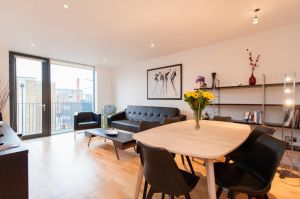
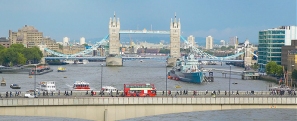












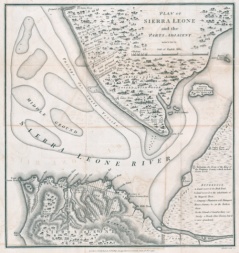
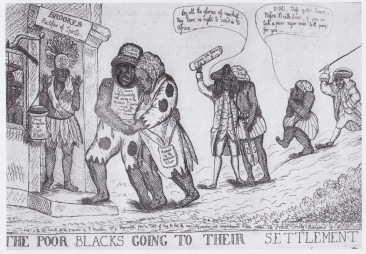

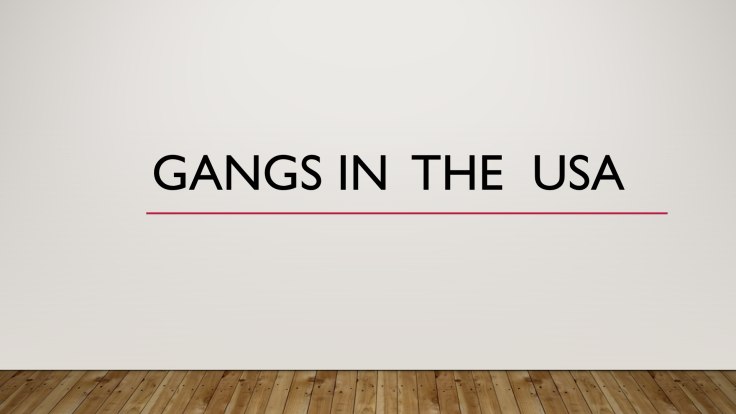
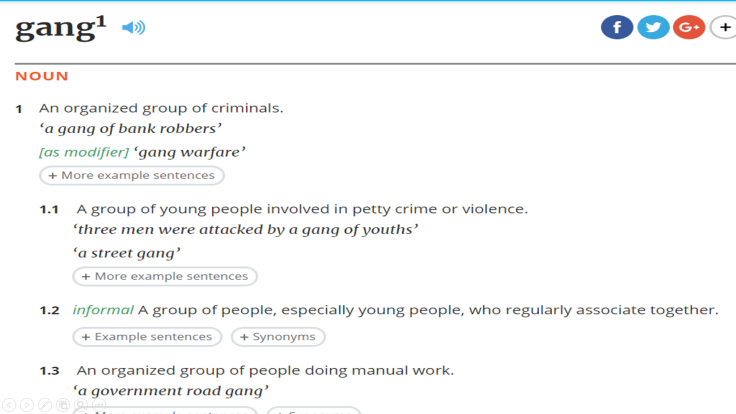
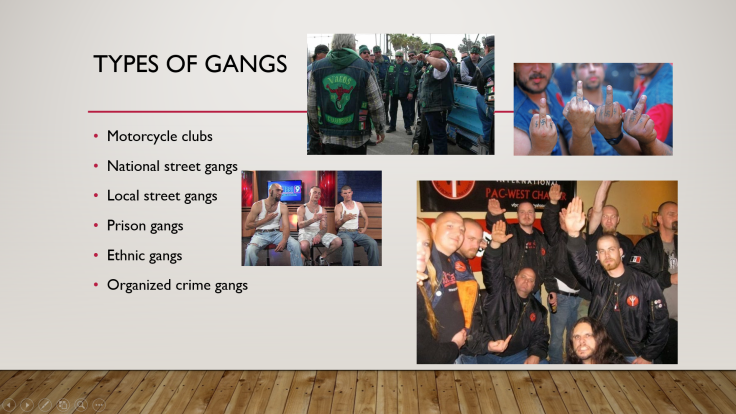
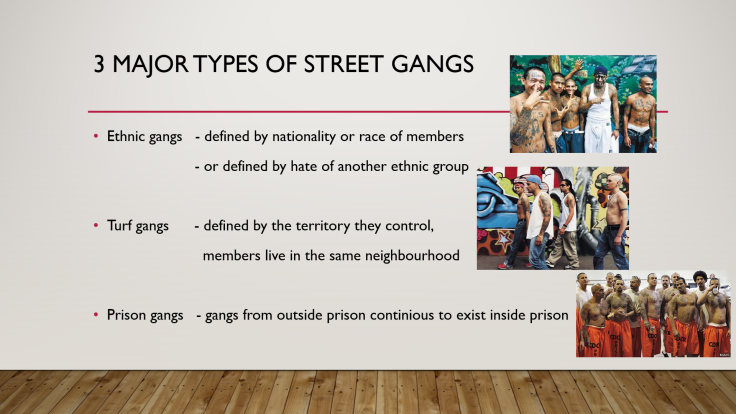
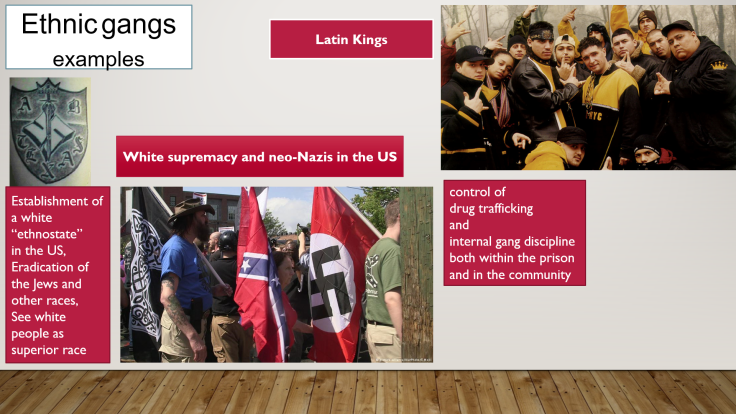

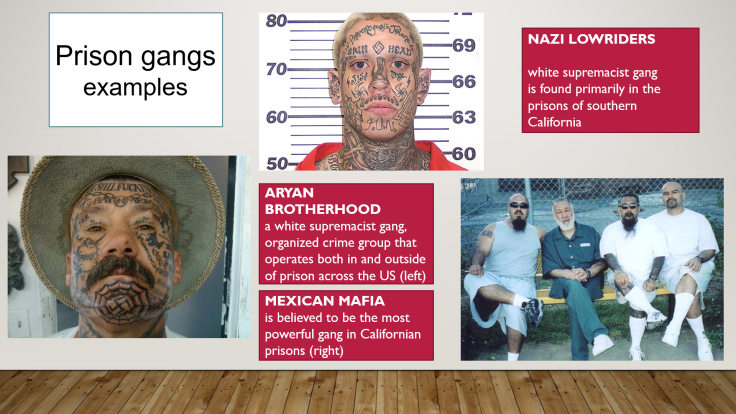
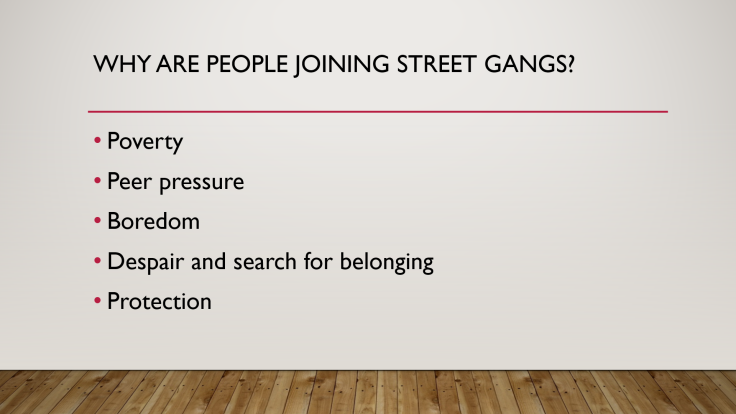
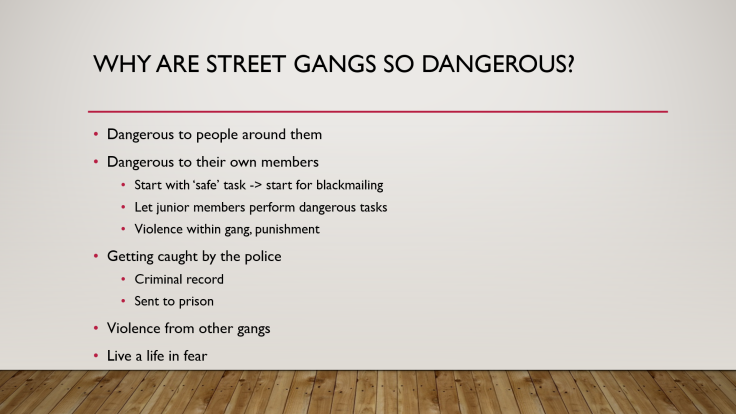
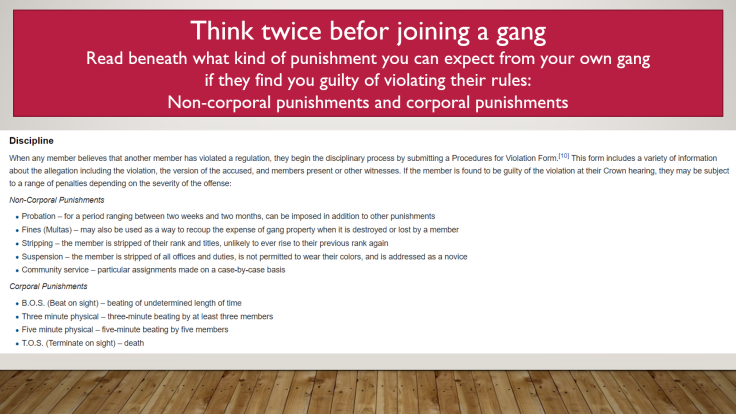





















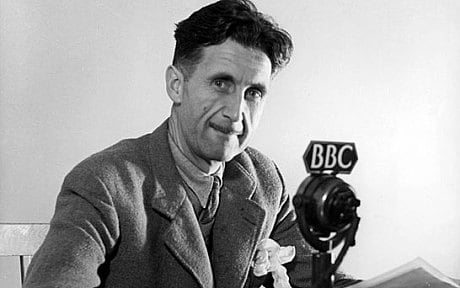



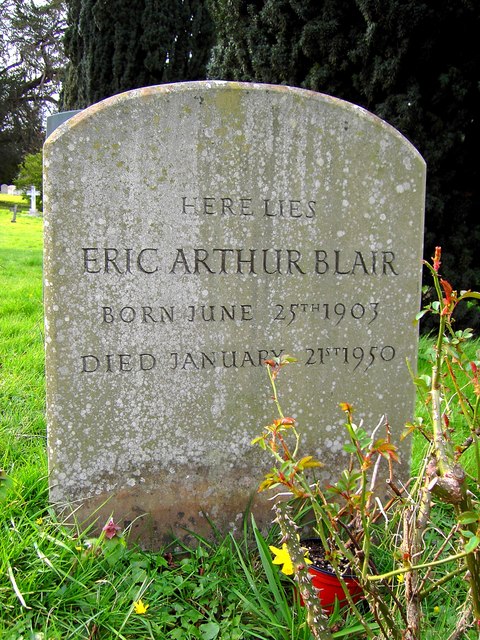


Recente reacties